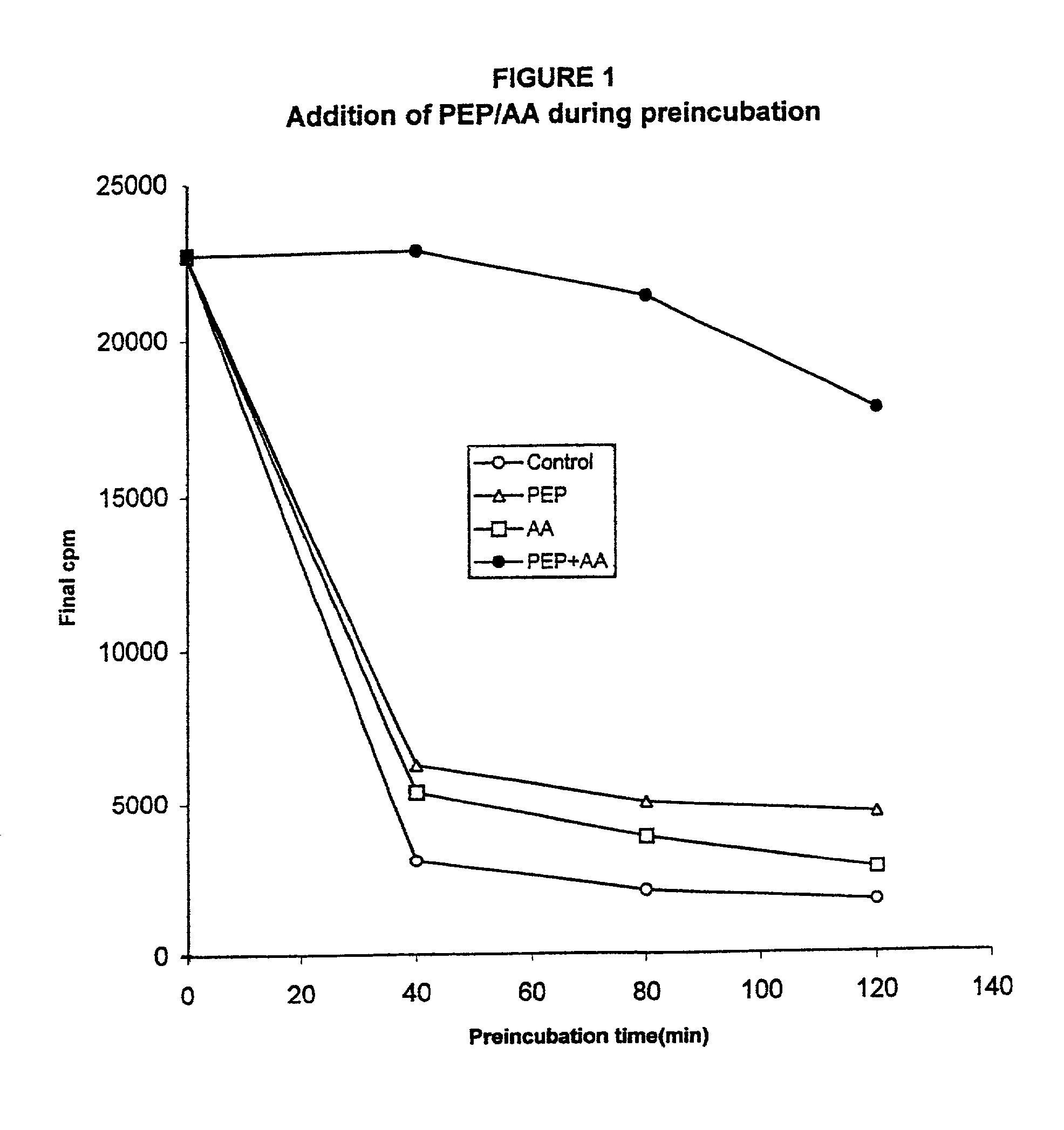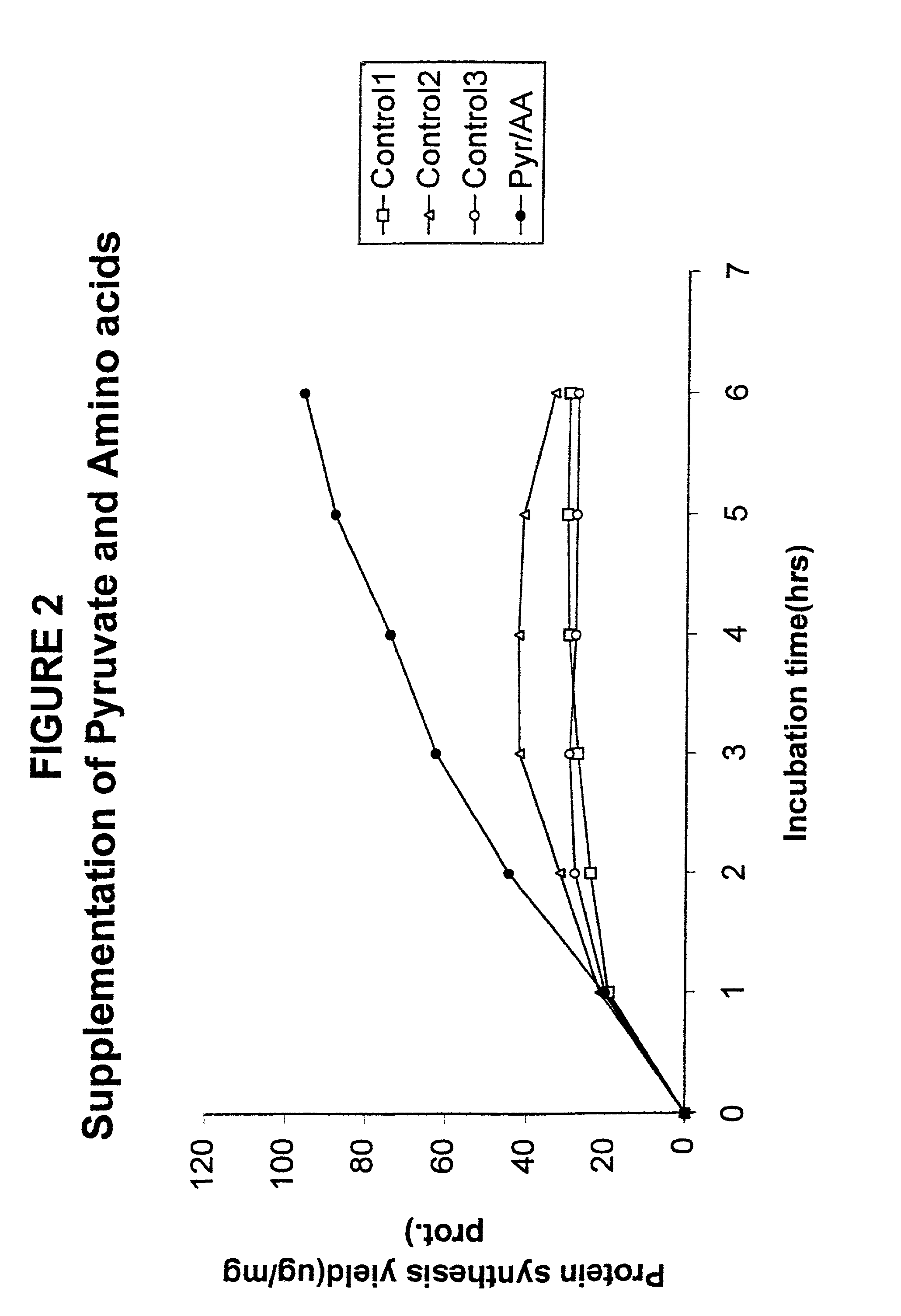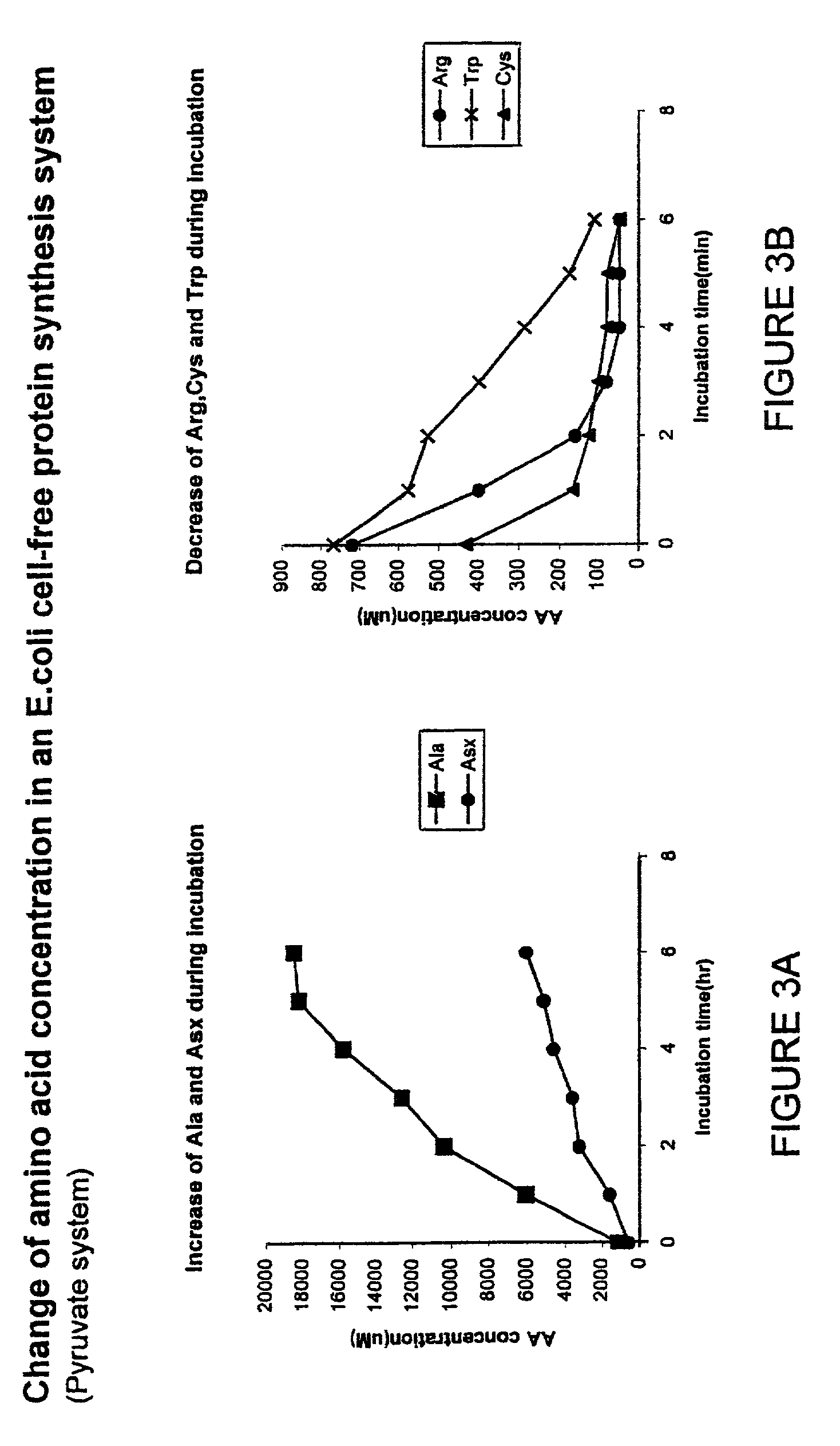In vitro synthesis of polypeptides by optimizing amino acid metabolism
a technology of amino acid metabolism and polypeptides, applied in the direction of peptides, tumor necrosis factor, transferases, etc., can solve the problems of undesirable increase in concentration of amino acids, including alanine, aspartate and asparagine, and achieve the effect of enhancing, reducing or eliminating the responsible enzyme activity of in vitro synthesis of protein molecules
- Summary
- Abstract
- Description
- Claims
- Application Information
AI Technical Summary
Benefits of technology
Problems solved by technology
Method used
Image
Examples
example 1
Pre-Incubation Experiment
[0090]The first example demonstrates that both the energy source and the amino acid source are being depleted. Throughout the examples to follow, two standard methods were used for cell-free protein synthesis. The first uses phosphoenol pyruvate (PEP) and pyruvate kinase to regenerate ATP from ADP. This is termed the PEP system. The second uses pyruvate and pyruvate oxidase to regenerate ATP. This is called the pyruvate system.
[0091]The standard reaction mixture for the PEP system produces a base level of protein expression (approx. 100 μg / ml or 13.8 μg / mg cellular protein) and consists of the following components:
[0092]57 mM Hepes-KOH (pH 8.2), 1.2 mM ATP, 0.85 mM each of GTP, UTP and CTP, 1 mM DTT, 0.64 mM cAMP, 200 mM potassium glutamate, 80 mM NH4(OAc), 15 mM Mg(OAc)2, 34 mg / ml folinic acid, 6.7 μg / ml plasmid, 33 μg / ml T7 RNA polymerase, 500 μM each of 20 unlabeled amino acids, [3H] leucine (0.27 GBq / mmol), 2% PEG 8000, 20 mM PEP (phosphoenol pyruvate), ...
example 2
Supplementation Experiments
[0097]In another set of experiments, no pre-incubation was used. Instead repeated additions were made to the synthesis reaction mixture in an attempt to prolong the reaction. The results of such an experiment with the pyruvate system are shown in FIG. 2. The initial volume of each reaction was 15 μl. At each hour after the reaction was started, 1.1 μl was added. In Control 1, water was added; in Control 2, 0.25 μl of 2M pyruvate and 0.85 μl water; in Control 3, 0.85 μl of amino acid mixture and 0.25 μl of water; and for the curve labeled “Pyr / AA”, 0.25 μl of 2M pyruvate and 0.85 μl of amino acid mixture. The curves show the protein synthesis yield per mg of protein in the S30 cell extract. Clearly, the addition of more energy source alone is not sufficient for effective continuation of protein synthesis.
example 3
Measuring Changes in Amino Acid Concentrations
[0098]Surprisingly, some amino acids concentrations are increasing while others are decreasing much more rapidly than the rate of incorporation into new protein. The observations indicated in the previous examples prompted the measurement of individual amino acid concentrations during the course of a protein synthesis reaction. In this case, a pyruvate-driven reaction of 900 μl was started. Samples of 100 μl were taken each hour, diluted 1:1 with cold water and deproteinized by adding 200 μl of cold 10% TCA (trichloroacetic acid) solution. After centrifugation the supernatant was analyzed using a Beckman 1600 amino acid analyzer. Most amino acids did not change in concentration. However, two very surprising types of observation are shown in FIGS. 3A and 3B. Alanine and aspartic acid / asparagine both increased significantly in concentration. In contrast, the concentrations of arginine, tryptophan and cysteine all decreased significantly. I...
PUM
| Property | Measurement | Unit |
|---|---|---|
| pH | aaaaa | aaaaa |
| volume | aaaaa | aaaaa |
| volumes | aaaaa | aaaaa |
Abstract
Description
Claims
Application Information
 Login to View More
Login to View More - R&D
- Intellectual Property
- Life Sciences
- Materials
- Tech Scout
- Unparalleled Data Quality
- Higher Quality Content
- 60% Fewer Hallucinations
Browse by: Latest US Patents, China's latest patents, Technical Efficacy Thesaurus, Application Domain, Technology Topic, Popular Technical Reports.
© 2025 PatSnap. All rights reserved.Legal|Privacy policy|Modern Slavery Act Transparency Statement|Sitemap|About US| Contact US: help@patsnap.com



